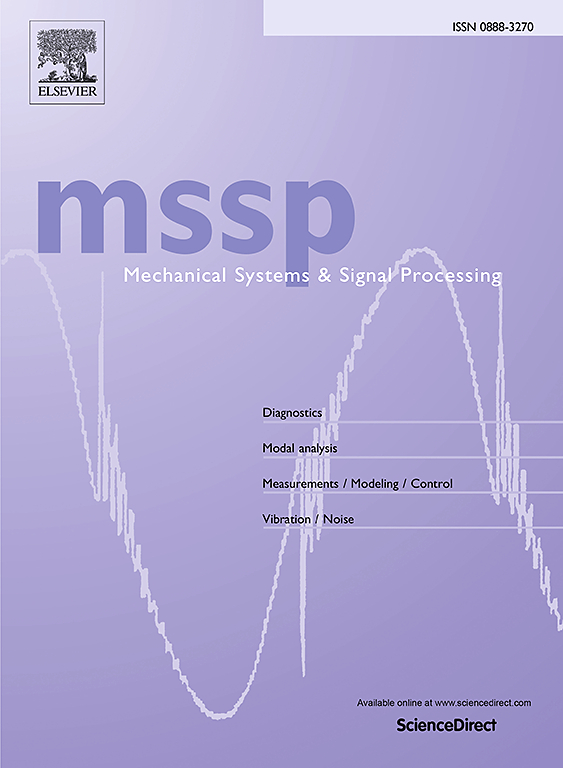Main shaft instantaneous azimuth estimation for wind turbines
IF 7.9
1区 工程技术
Q1 ENGINEERING, MECHANICAL
引用次数: 0
Abstract
We present a novel approach to estimating the instantaneous main shaft angular position in the context of wind turbine structural health monitoring. We show that only two IMU channels – gyroscope axial and accelerometer tangential – contain enough information to build an acceleration state-space model that properly captures the rotational dynamics of a wind turbine. The kernel of the model is an in-phase and quadrature time-varying sinusoid whose argument is driven by the integral of the gyroscope output. This approach clearly stands in contrast to most state-of-the-art methods, where the gyroscope output is explicitly modeled. The model equation describes the states dynamics, which simultaneously assesses the instantaneous amplitude and initial phase of the angular displacement through a first-order autoregressive process. Such a state-space model features only two states per time instant; furthermore, it is linear-in-states and therefore straightforwardly estimated by the linear Kalman filter. It is shown that the instantaneous azimuth estimates obtained from the state-space model, linearly combined with the gyroscope output, effectively cancel out the long-term drift in the estimate. The benchmark results suggest that the proposed method outperforms a state-of-the-art method, in terms of robustness against noise and adaptability to changing operating regimes in a wind turbine.
求助全文
约1分钟内获得全文
求助全文
来源期刊

Mechanical Systems and Signal Processing
工程技术-工程:机械
CiteScore
14.80
自引率
13.10%
发文量
1183
审稿时长
5.4 months
期刊介绍:
Journal Name: Mechanical Systems and Signal Processing (MSSP)
Interdisciplinary Focus:
Mechanical, Aerospace, and Civil Engineering
Purpose:Reporting scientific advancements of the highest quality
Arising from new techniques in sensing, instrumentation, signal processing, modelling, and control of dynamic systems
 求助内容:
求助内容: 应助结果提醒方式:
应助结果提醒方式:


